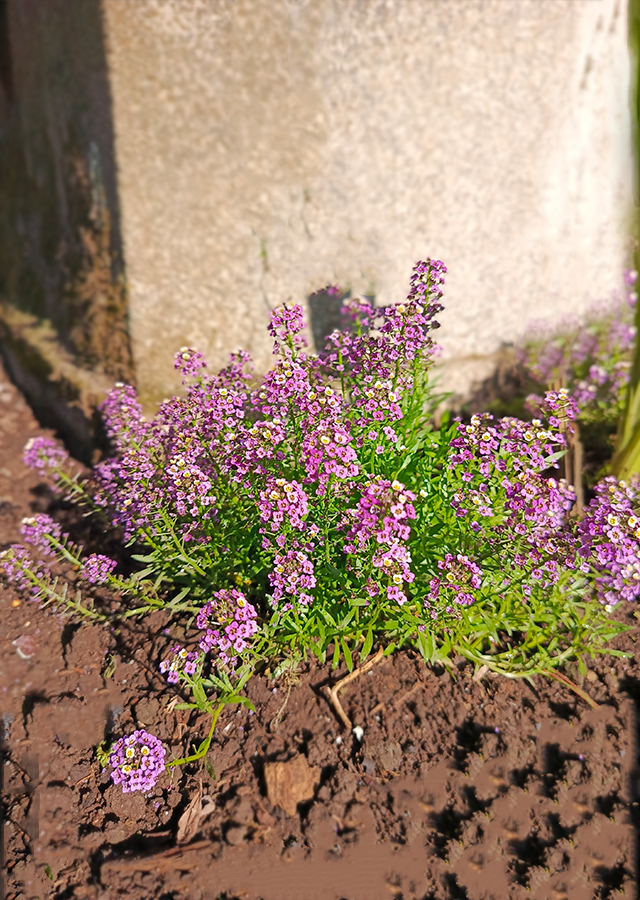Traditional Herbs from Lobularia maritima
wound
- Take enough fresh alyssum leaves, wash them until clean.
- Crush them until they become a paste.
- Apply the leaf paste on the wounds.
refresh_the_body
- Take 500 g of fresh alyssum flowers, wash them until clean.
- Boil until it boils and the water changes color.
- Strain then drink while warm.
What is Lobularia maritima Looks like??



Parts of Lobularia maritima that could be used
- Leaves
- Flowers
- All Parts of the Plant
Lobularia maritima Distribution
Alyssum or Lobularia maritima is an annual or short-lived plant native to the Mediterranean, Canary Islands and Azores, where it grows along the coast in rocky and sunny areas. It was introduced to North America because of its drought tolerance, and has also been cultivated in the northern United States. This species is in great demand and is widely cultivated as an ornamental plant because of the beauty of its flower shape. Lobularia maritima, usually taken from the wild for local use as a food and medicinal plant. This species is also endemic to Italy and its use as a traditional food source in Southern Italy (Sicily) has been documented. The young leaves, stems, and flowers can be used as a flavoring in salads and other dishes that require a spicy taste. Based on its function as a medicinal plant, Lobularia maritima is known to contain various compounds that can help maintain body health and are believed to be able to relieve various diseases. However, its use orally for pregnant women is not recommended. Apart from being a food and medicinal plant, this species is also known to produce large amounts of nectar and is an excellent source of various hymenopteran parasitoids.Agroecology of Lobularia maritima
Alyssum habitat usually grows on roadsides, trash cans, empty land, agricultural fields, walls, bushes, sand dunes, coastal zones, especially along the Atlantic, Gulf and Pacific coasts as well as inland, at altitudes ranging from sea level to a height of 800 m asl. In the Mediterranean, Alyssum is usually found in dry sunny places, and in England it grows on the seashore. Its growth prefers open and sunny positions. Alyssum grows well in almost any soil, but it is best if the soil is sandy, loose, light, fertile and well-drained. This species is also drought tolerant.
Morphology of Lobularia maritima
- The roots are shallow, low and spreading.
- The stems are branched and form many clusters of flowers.
- The leaves are alternate, oval to lanceolate without indentations, gray-green in color.
- Small flowers -small and dense, usually white but sometimes pink or lavender, fragrant, has a honey-like aroma. The petals are ovate. Stamens are 6, glands flank the short, oval filaments (petals). Flowers cluster together in dense terminal heads (racemes).
- Fruit\u00a0round flat, often purplish, long, pointed, sparsely hairy.
- Seeds light brown to reddish, wingless.
Cultivation of Lobularia maritima
Plant propagation through seeds (generative). After about 10-14 days after sowing, young shoots will appear.
Lobularia maritima, more details :
Chemical Content of Lobularia maritimaLinalool, flavonoids (kaempferol, kaempferol�7�rhamnoside, kaempferol 3�glucoside�7�rhamnoside,� kaempferol�3�diglucoside, quercetin�7�glucoside, kaempferol 3�O�β�D�glucopyranosyl�(1→2)�O�α�L�xylopyranoside, and kaempferol 3�O�α�L�rhamnopyranosyl�(1�'2)�O�α�L�arabinopyranoside), alkaloids, saponins, tannins, essential oils, and other compounds.
Benefits of Lobularia maritima
Accelerates wound healing, relieves headaches, improves and maintains healthy skin, neutralizes toxins on the skin, treats gonorrhea, refreshes the body. Has activity as an antiscorbutic and diuretic.
Simplisia of Lobularia maritima
Another Facts for Lobularia maritima :
Synonym of Lobularia maritimaAdyseton maritimum (L.) Link, Alyssum maritimum (L.) Lam., Clypeola maritima L.
Habitus of Lobularia maritima
Herb. Annual or seasonal herb, up to 0.15 m tall
Habitat of Lobularia maritima
- Coastal
- Roadside
No comments:
Post a Comment